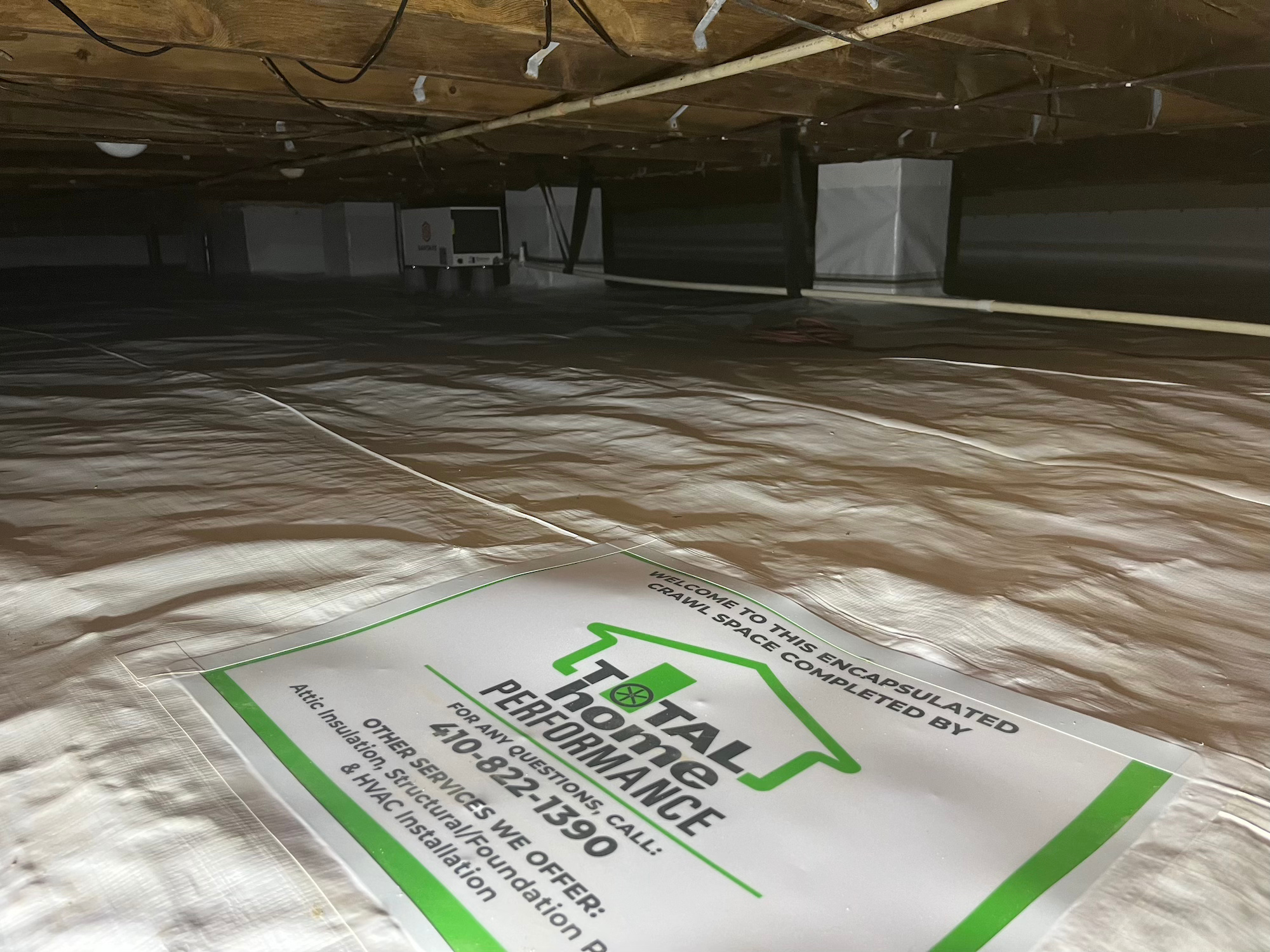
Spring is the best time to get ahead on home maintenance! A little effort now will prevent damage and costly repairs down the road.
There are many spring home upgrades to consider, but on the Eastern Shore, we’re mainly concerned about moisture. Rain and humidity during the warm months can lead to mold, wood rot, and foundation damage if left unchecked.
If you want to avoid water damage, keep reading! This spring home maintenance checklist will help you protect your home and avoid moisture issues before they start.
1. Look for Water in Your Basement or Crawl Space
A wet basement or crawl space is one of the most common problems in Maryland and Delaware homes, especially during the spring and summer. High humidity and poor drainage will make it worse, leading to problems like mold, rot, and poor indoor air quality.
What to Look For: Musty odors, condensation on walls, standing water, mold, and white powdery residue on walls.
What to Do About It:
There are many basement waterproofing and crawl space moisture solutions. The best fix usually depends on how the water is getting in. Depending on the cause, we may recommend:
- Crawl space encapsulation
- A basement dehumidifier
- French drain installation
- Sump pump installation
2. Test Your Dehumidifier & Heat Pump/Air Conditioner
Your air conditioner or heat pump and dehumidifier are essential during the hot, humid summer. They don’t just keep your house cool—they also keep it dry by removing humidity from the air. Before the heat really sets in, it’s important to test your cooling systems to make sure they’re in good shape.
What to Look For: Dirty or clogged air filters, condensation on ducts, musty air, high humidity levels.
What to Do About It:
There are a few things you can do to get your heat pump/AC and dehumidifier ready for summer:
- Clean or replace air filters
- Clean dirty vents
- Inspect and seal leaky air ducts
- Schedule a professional tune up
3. Improve Yard & Landscape Drains
In a rainy, humid, coastal place like the Eastern Shore, you need good drainage! If you have French drain or landscape drains, inspect them for clogs and make sure they’re draining properly.
If you don’t have a drainage system, look for signs that you need one.
What to Look For: Standing water in your yard, water pooling near the foundation, soggy lawn, washed-out driveway.
What to Do About It:
- Clean out any landscape drains or French drains.
- Add additional soil or regrade areas where water pools.
- Install a French drain if you don’t already have one
4. Test Your Sump Pump (Or Install One)
For most homes, a sump pump is crucial for moisture control. If you already have one, spring is the best time to inspect it and make sure it’s working properly. If you don’t already have a sump pump, it might be time to think about installing one.
What to Look For: Sump pump not turning on, slow drainage, unusual noises, or debris buildup in the pit.
What to Do About It:
- Test the pump by pouring water into the pit to ensure it activates.
- Clean the pump and pit to remove dirt and debris.
- Check the discharge pipe to ensure water is being directed away from your foundation.
- Consider installing a battery backup in case of power outages.
5. Clean Your Gutters!
Every spring maintenance checklist will tell you to clean your gutters—and for good reason! Clogged gutters can’t drain water away from your home and can even overflow, causing serious water damage.
What to Look For: Clogged gutters, sagging sections, water stains on siding, pooling water near your foundation.
What to Do About It:
- Clean out gutters and downspouts
- Check for cracks or sagging sections
- Make sure downspouts extend at least 5 feet away from the foundation
6. Check for Roof Leaks
Snow and ice on your roof over the winter can lead to leaks that go unnoticed until spring. Make sure you take the time to look for signs of a roof leak so you can fix it before it causes significant water damage.
What to Look For: Missing or damaged shingles, water stains on ceilings, damp attic insulation, mold in your attic.
What to Do About It:
If you have a roof leak, you have to fix it. But you can’t just close the leak. You also have to fix any damage it caused.
- First, fix the leak
- Mold remediation if needed
- Replace wet attic insulation
7. Schedule a Moisture & Humidity Assessment
It isn’t always easy to tell why your house is so humid or how moisture is getting in. If you know you have a moisture problem, but you’re not sure what’s causing it, Total Home Performance can help. Our moisture and humidity assessments look at every part of your home, from the crawl space to the attic, to find the root cause of moisture issues.
We don’t just clean up water damage. We figure out what’s causing the problem and implement a permanent solution so your home stays dry and protected.